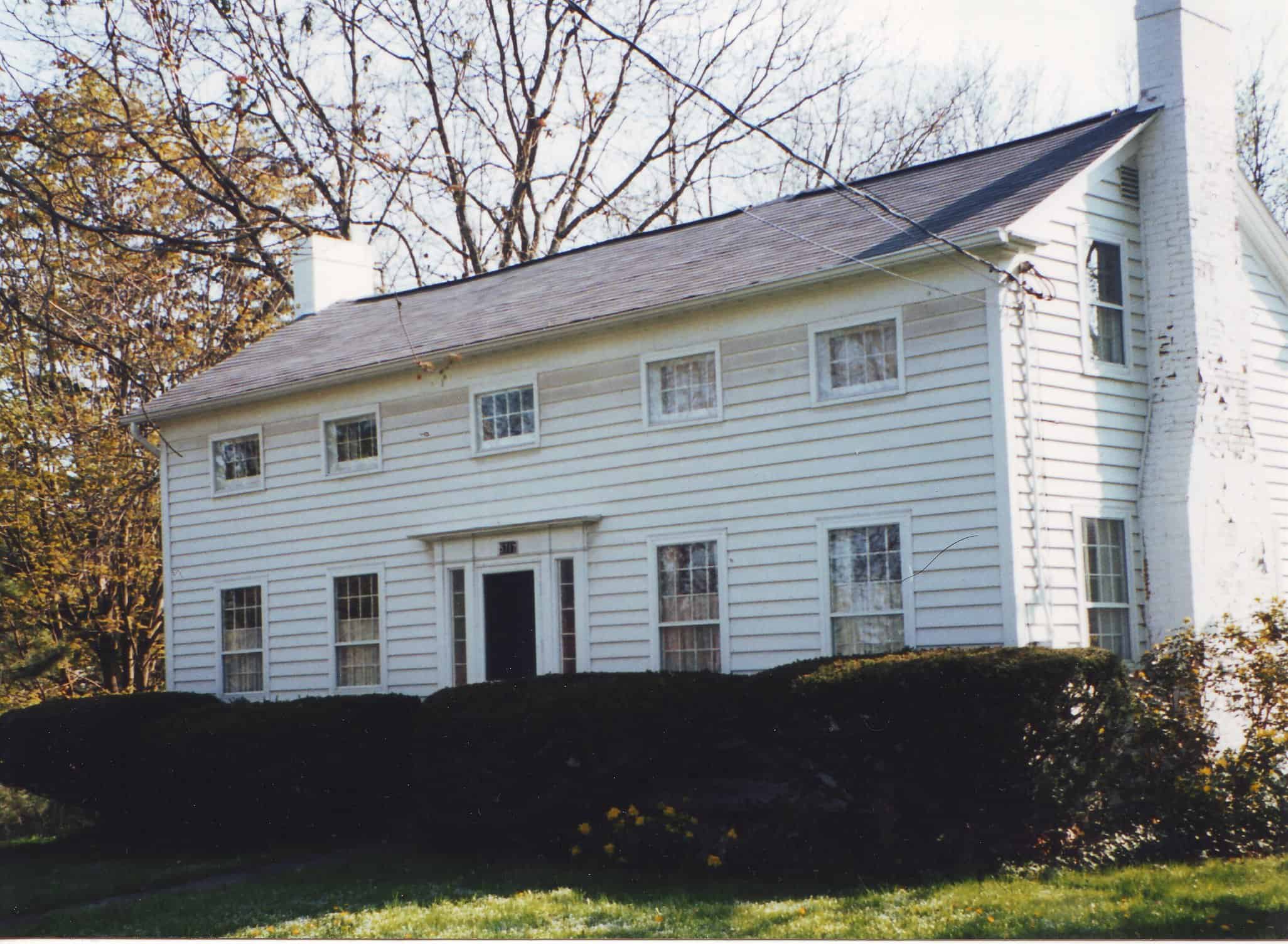Banner Photo Credit: Rosamond Gifford (1873-1953) From the painting by Dorothy Keens Ashley
It all began with the birth of Rosamond Gifford on September 15, 1873 (though it should be noted that Ms. Gifford consistently shaved about ten years off of her age – her tombstone records her birth date as April 15, 1882). Rosamond was the daughter of William H. Gifford and Mary Augusta Skinner. William H. Gifford was a well-known attorney in Syracuse and a former District Attorney. Rosamond Gifford’s young life was something out of a Henry James novel. She spent her time split between her father’s house on West Onondaga Street and her mother’s family property in Tully.

Rosamond Gifford’s Thompson Road property, which is now a part of the LeMoyne College campus.
As a teenager, Rosamond was sent off to a boarding school in Wellesley, Massachusetts. There she met an older man who called himself Fred LaFayette, but whose real name was LaJeunesse. LaJeunesse was a professional railroad gambler. They lived together for a time and, in 1895, when Rosamond was twenty-two, she married Fred. To add further intrigue, she married under the assumed name “Violette LaVigne.” The marriage didn’t work out and she divorced Mr. LaFayette in 1900, taking back the name of Gifford.
In approximately 1904, at her father’s urging, Rosamond moved to Boston to study the harp, returning briefly in 1912 when her mother became ill and passed away. Even though her mother left the Tully property and the rest of her estate to her daughter, Rosamond returned to Boston in January of 1913 with plans to sell the property. However in May of 1913 she was convinced by her father to give up her dream of becoming a harpist when William promised to give Rosamond his entire estate outright if she agreed to live on and care for her father’s farm on Thompson Road for the balance of his life. The agreement was drafted as a legal document, was signed, and witnessed.
On May 2, 1917 William Gifford died leaving an estate in the extraordinary sum of $1.25 million. Unbeknownst to Rosamond, William had signed a will in 1915 giving his estate in trust for ten years to the Trust and Deposit Company of Onondaga. Rosamond contested the Will based on the agreement that her father entered into with her. She had kept her promise to take care of his farm on Thompson Road and she expected the agreement her father made with her to be honored. After several years of litigation, the Onondaga County Surrogate’s Court decided in Rosamond’s favor. The entire estate would pass to Rosamond Gifford outright.
By the time Rosamond inherited her father’s estate, it had grown to $1.4 million. An article in the November 23, 1920 Syracuse Herald provides one of the few insights into Rosamond’s thinking about wealth and charity:
“I do want to help people… I shall take the advice of people I know I can trust and then I’ll try to get at those who need help and are too proud to ask for it.”
“Do you know that since Dad died, I have probably had 1,000 or 2,000 letters and that practically all of them have asked for money? These letters are practically all begging letters. They ask for all kinds of sums from $.35 to $100,000. I could have given away every penny that my father left twice over, if I had responded to even a quarter of the requests I had received.”
I have been asked to send boys and girls through college. I have been asked to endow hospitals. I have been asked to build churches of every denomination and to found scholarships and take over business concerns. I have been invited to invest in at least 500 get rich security and stock companies.”
But, please don’t think that because I have no idea of handing over my money to everyone who asks for it that I don’t intend to do any good with it, or that I mean to hoard it. I do want to help people. I haven’t decided yet just how it ought to be done, but I don’t think it will be through organized charity. I shall take the advice of people I know I can trust and then I’ll try to get at those who need help and are too proud to ask for it, if that seems to be the best way.”
For reasons that are not fully known or understood (although possibly because Fred, the former husband, periodically appeared), Rosamond chose to live out the balance of her years in relative seclusion. She moved from the Thompson Road farm to her property in Jewell on Oneida Lake in 1929, surrounded by her horses and other animals. Over those years she was only in close contact with her lawyer George Alston Smith and her banker Howard F. Zinsmeister. In 1945 she sold several acres of the Thompson Road farm to the Society of Jesus, who founded Lemoyne College on the property.
Rosamond passed away at University Hospital on April 15, 1953 – the irony of dying on tax day would not have been lost on a woman who regularly made her tax checks payable to the “Infernal” Revenue Service. Rosamond’s Will was dated July 31, 1952. The great bulk of her wealth was to be directed to an organization formed exclusively for “religious, educational, scientific, charitable or benevolent uses known as the Rosamond Gifford Charitable Corporation.”
The Rosamond Gifford Charitable Corporation was formally incorporated July 23, 1954. The Corporation started with approximately $5 million from Rosamond’s estate. She had invested well and had spent little of the funds she inherited from her father. At one time she was the largest single shareholder of ATT stock.
Shortly after incorporation, Rosamond Gifford’s long time trusted advisors, George Smith and Howard Zinsmeister, passed away. Allan Coughlin, Mr. Smith’s law partner, was elected president of the Corporation and served in that role for many years. From then on, until the late 1990’s, the board remained almost exclusively within these families and their close business associates – wives and children replacing older board members.
The last direct link to Ms. Gifford was in 1991 when the last of the original trustees, daughter to Ms. Gifford’s investment advisor, died. In 1999 the board doubled in size and admitted its first member of color, Bea Gonzalez. The newly invigorated Board took a leadership role to help the community to identify needs, prioritize projects, and apply Gifford resources. It now has 14 members and is considered one of the more diverse boards in the community.
(Summarized by Larry Bousquet, former board member, and Heidi Holtz, former director of research and projects – based on information culled from Promise & Performance: The Rosamond Gifford Charitable Corporation, Copyright 2003 and the Syracuse Herald).
Stay in touch
We have a lot of stuff in the works - don't be the last to know.


